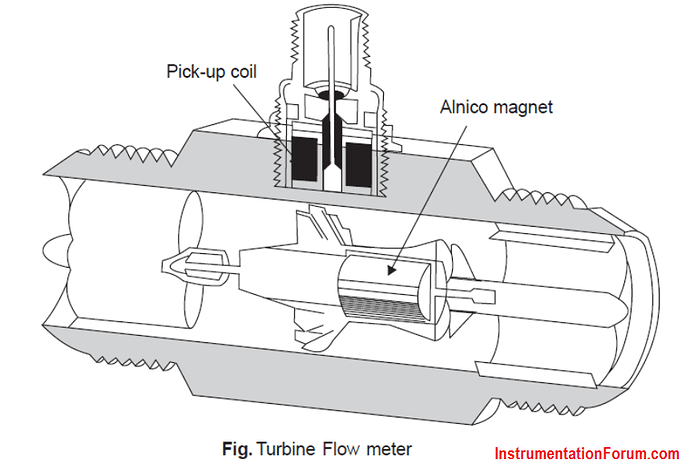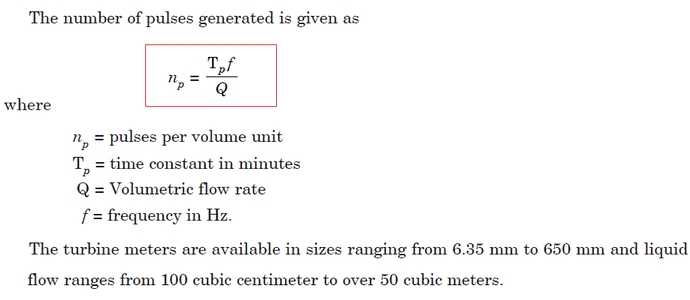The turbine flow meter is mainly used for the purpose of measurement of liquid and gas at very low flow rates.
A simple turbine flow meter shown in Fig., provides a frequency output signal that varies linearly with volumetric flow rate over specified flow ranges. The entire fluid to be measured enters the flow meter, then passes through a rotor.
The fluid passing through the rotor causes it to turn with an angular velocity that is proportional to the fluid linear velocity. Therefore, the volumetric flow rate is linear within the given limits of flow rate.
Let us consider a typical Turbine flow meter shown in below Fig, which consists of a multibladed rotor (turbine wheel) which is mounted at right angles to the axis of the flowing fluid.
The rotor is supported by ball or sleeve bearings on a shaft which is retained in the flow meter housing by a shaft-support. The rotor is rotating freely about its axis.
Working
The flowing fluid impinges on the blades of turbine (rotor), imparting a force to the blade surface which causes the rotation of the rotor. At a steady rotational speed, the speed of the rotor is directly proportional to the fluid velocity, and hence to volumetric flow rate.
The speed of rotation is monitored in most of the meters by a magnetic pick-up coil, which is fitted to the outside of the meter housing.
The magnetic pick-up coil consists of a permanent magnet with coil windings which is mounted in close proximity to the rotor but external to the fluid channel.
As each rotor blade passes the magnetic pick-up coil, it generates a voltage pulse which is a measure of the flow rate, and the total number of pulses give a measure of the total flow.
By digital techniques, the electrical voltage pulses can be totalled, differenced and manipulated so that a zero error characteristic of digital handling is provided from the electrical pulse generator to the fluid readout.
Advantages
- Better Accuracy [± 0.25% to ± 0.5%].
- It provides excellent repeatability [± 0.25% to ± 0.02%] and rangeability (10 : 1 and
20 : 1). - It has fairly low pressure drop.
- It is easy to install and maintain.
- It has good temperature and pressure ratings.
- It can be compensated for viscosity variation.
Disadvantages
- High cost.
- It has limited use for slurry applications.
- It is not suitable for non-lubricating fluids.
- They cannot maintain its original calibration over a very long period and therefore
periodical recalibration is necessary.


